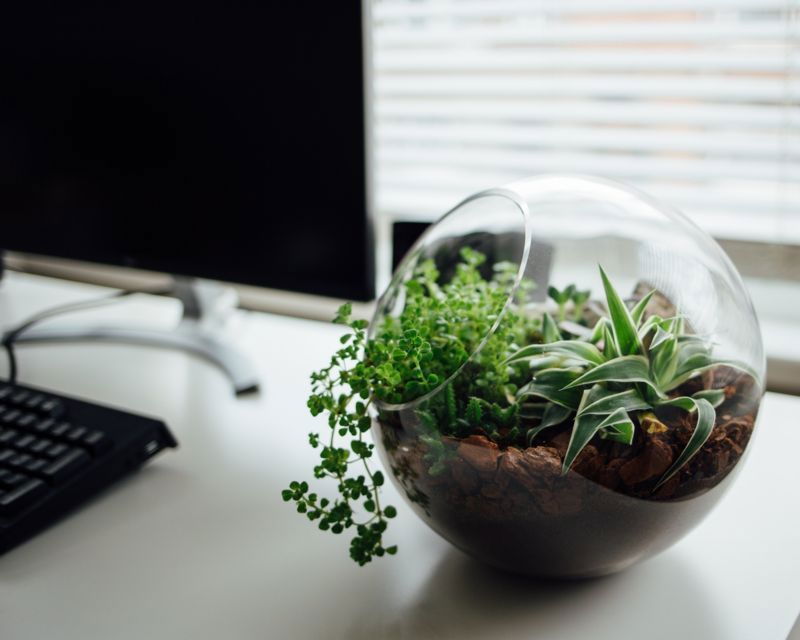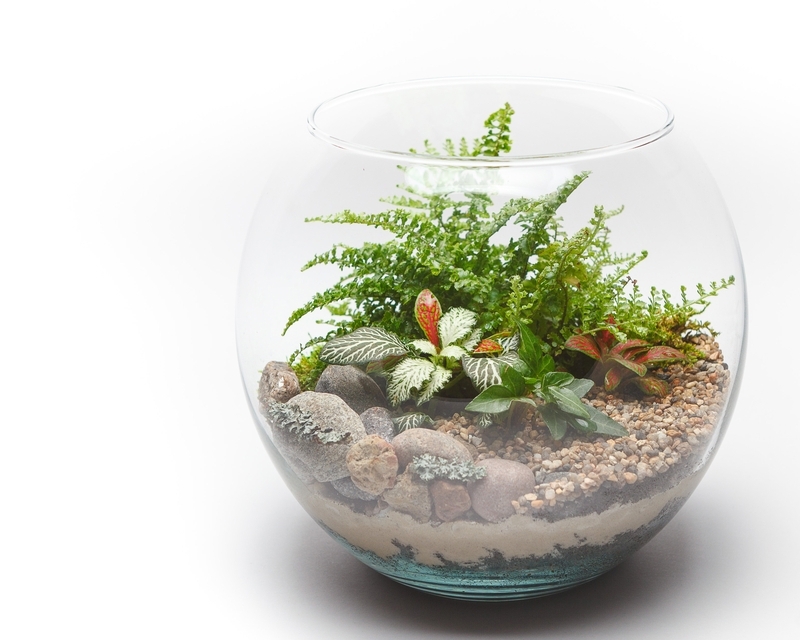Yates Account
Join now
Create a Yates account today!
Sign up to join the Yates Garden Club for monthly e-mails packed with seasonal inspiration, tips for success & exclusive promotions.
Plus if you’re a Garden Club member you can take part in the Yates Growing Community - a blog to share successes, get advice & win prizes in fun challenges along the way!

Forgot password
Enter the email address associated with your account, and we'll email you a new password.

Terrariums, open vessels or indoor containers, whatever you choose to call them, one thing is for sure – they’re amazing! And the best thing about them is that anyone can make them. You can create many different themed worlds that can be enjoyed from your kitchen to your couch, in fact, anywhere indoors that takes your fancy.
There are a couple of things that should be considered before getting out the jar and the plants:
Theme
Think about the theme of your small world. Are you after a dry arid landscape, a beach paradise or a lush forest that red riding hood can lose herself in? The best inspiration for designing your terrarium comes from nature itself. Look at photos of beachscapes, rainforests or tropical paradises and think about how you can recreate these images using plant choices and other objects.
Vessel
Once you have your design set, then look at the jar. Do you want it closed or prefer it open? Many understorey ferns, indoor plants, or forest-like plants perform well in closed jars and will require minimal care once properly established. These plants can also be grown in open jars as well, but will require slightly more attention to ensure that they get the water that they need.
Succulents, air plants and cacti perform at their best in open jars as they prefer drier conditions and need good air circulation. If you are a sucker for succulents, an open jar is the only way to go.
Plants
With so many plants out there what ones do you choose? For basic designs it is best to look at ‘thrillers’ (the main star of the terrarium), ‘spillers’ (these soften the edges) and ‘fillers’ (great for filling the space).
Decorations
This is where you can let your creative side out. Think about what stones or features you want to include in your jar. Try out different designs and really let your imagination take hold.
Once you have sorted out the essentials it’s time to create!

You will need:
- Glass jar
- Stones for the base of the terrarium
- Horticultural charcoal
- Paper or sphagnum moss
- Yates Thrive Cacti & Succulent Potting Mix
- Plants (we used Crassula ‘Gollum’, Sedum album and Aloe sladeniana)
- Decorative sand/pebbles (for groundcover)
- Funnel
- Large decorative stones
- Small pot to scoop potting mix
- Spray bottle filled with water
- Paintbrush
- Paper towel
- Gloves
Step 1: Clean jar and ensure that it is completely dry before placing any objects inside.
Step 2: Add 1.5-2cm layer of stones to the base of the jar to assist with drainage.
Step 3: Cut a piece of paper into a circle or use a small amount of slightly moist sphagnum moss to line the top of the stones. This layer will help prevent the soil moving through to the stones.
Step 4: Place a small amount of horticultural charcoal on top of the paper. This will assist with the removal of odours and toxins in the potting mix over time.
Step 5: Using the small pot, scoop potting mix into the jar, covering the paper of layer of paper well. Don’t be tempted to place too much soil into the jar at this stage. It is easier to add to the jar after the plants have been positioned.
Step 6: Create a small well in the centre of the soil. Remove plants from their pots, tickle the soil to remove excess dirt and cut away at the rootball, if necessary.
Step 7: Carefully place a plant into the prepared hole and backfill with potting mix. Repeat for remaining plants, then water in lightly using the sprayer.
Step 8: Level or create mounds in the soil. Clean the sides of the jar with the paintbrush and paper towel, removing any excess water or soil.
Step 9: Funnel the sand into the jar, covering all the soil. Clean any sand from the leaves of the plants and sides of the jar using the paintbrush and paper towel.
Step 10: Position large decorative stones on top of the sand. Give the jar a final clean and light water.
Step 11: Place terrarium in a sheltered indoor area that receives plenty of indirect light. Water lightly each week using a sprayer filled with water.














Share
Share this article on social media